TEXT NECK SYNDROME
'Let's enjoy now, to suffer later'
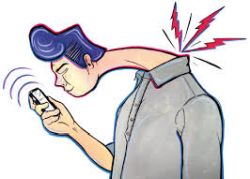
It's the time when not having a smartphone in hand makes you different from the others, not knowing how to use social networks means you're 'outdated', everyone on social networks, children, teenagers, students, adults, even the elderly. Everyone has a reason to use it, some for fun, some for work and so on.
But all have a consequence, called 'TEXT NECK SYNDROME'
What is Text Neck Syndrome?
Text Neck Syndrome is the syndrome of overuse or continuous strain of the neck muscles but also of the shoulder during the time that the person's head is bent forward and the gaze is downward, or simply the position of the head while holding a smartphone, iPad, or the position in front of the computer. This leads to an increase in weight and pressure on the cervical part of the spinal column, namely the neck. This is closely related to the angle of the head bending forward in relation to the central axis. The more the head is bent forward, the angle increases - the force increases and in this way 'the weight' of the head increases and in this way the pressure on the part of the spinal column increases as in muscles, ligaments, joints, in the intervertebral disc. The more time spent in this status the more consequences there will be.
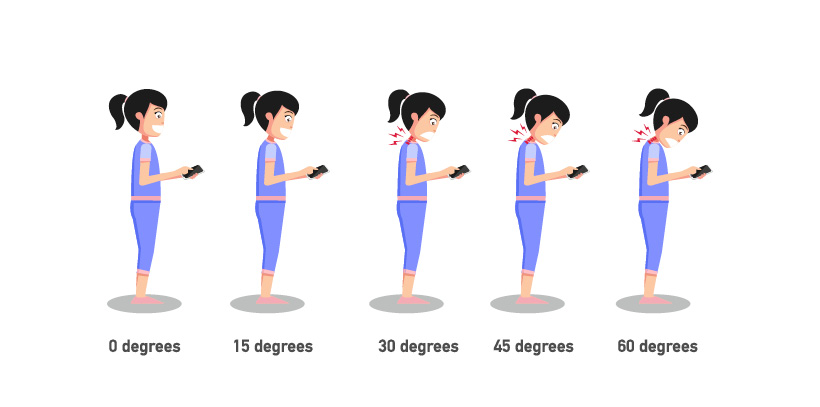
What are the consequences?
Normally the spinal column has 4 curves, 2 kyphoses and 2 lordoses, in the part of the neck called cervical lordosis, it is more convex forward. The position of the head is in the center, when the individual flexes the head forward, this position changes and becomes the cause for the disruption of the neck curve, the compressive force in the neck increases, muscles are strained and other consequences follow.
When the neck is bent forward, the anterior neck muscles are shortened while the posterior neck muscles are lengthened, disrupting a muscular balance. Shoulders gather, drawing closer to each other, in this case, the pectoral muscles are shortened, while the shoulder blades (scapulae) move away from each other, as a result, the muscles are lengthened over normal. The normal curve of the neck (cervical lordosis) is disrupted, flattened this can also affect other parts of the spinal column, mainly the thoracic as a compensatory way.
What signs appear in this case?
Pain in the part of the neck, back pain, shoulder pain, acute or chronic headaches, vertigo, if we have compression from the disc often there are pains in the upper arm, in the wrist with neurological signs such as numbness for example.
How does Physiotherapy help in solving this problem?
If you have this problem, physiotherapy helps. If you present yourself to a physiotherapist, they will help you in developing an effective rehabilitation plan. This consists of stretching exercises for the neck muscles which are contracted, exercises for strengthening the muscles which are weak and are lengthened, exercises for correcting posture, taping can also be used as well as massage therapy.
Tips for alleviating pain
- Take a break every 30 mins during your activities
- Keep handheld electronic devices (cell, iPad) at the same level as your eyes
- Do stretching exercises for the neck muscles
- Do exercises for strengthening the neck and back muscles 2-3 times/week
Exercises for Text Neck Syndrome
In the sitting/standing position, keeping the head in the normal/straight position, attempt to move your chin backward, in the posterior direction, bringing the chin closer to the neck and hold this position for 3-5 sec then return to the normal position. Repeat 10 times
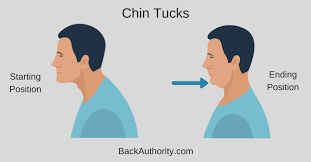
The same position as above (or the position as in the photo below). The person is invited to bring the shoulders closer to each other. This exercise serves to strengthen the shoulder muscles, but the main effect is on stretching the anterior shoulder muscles (pectoralis) which are contracted (shortened) from the wrong posture, from the forward-bent position and gathered shoulders. Stay in this position for 3-5 sec then return to the normal position. Repeat 10 times
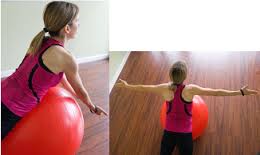
The individual in the supine position (lying down with back down) places a pillow in the lower part of the neck, not too high. Then try to push your chin down bringing the chin closer to your neck. This exercise serves to strengthen the posterior (back) neck muscles which are weakened and lengthened. Stay in this position for 5 sec then return to the normal position. Repeat 10 times
The individual in the prone position (lying down with the stomach down). Place a normal pillow in the part of the stomach, hands placed on the back part of the hips and try to raise the head and upper part of the body detaching from the floor. Stay in this position for 3-5 sec then return to the normal position. Repeat 10 times
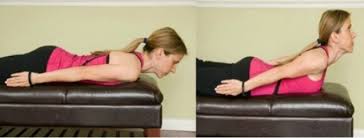
Dear doctor. I too have a similar problem with my neck due to work. In the MRI of the cervical part, it shows "Hypertrophy of the right uncinate processes in C5-C6". Is this a serious problem and which doctor should I consult?
Sent by Hektor Mula, më 23 Agust 2019 në 05:05